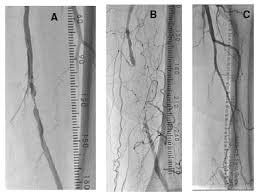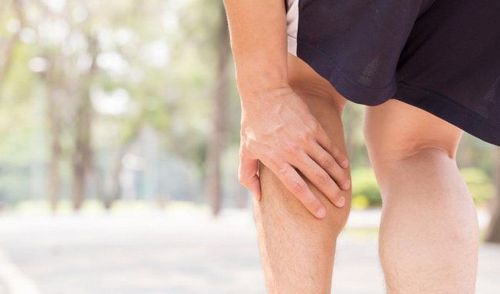This is an automatically translated article.
The article was professionally consulted by Dr. Nguyen Van Duong - Interventional Cardiologist - Cardiovascular Center - Vinmec Central Park International General Hospital.Claudication is a symptom that is easily confused with other diseases, especially musculoskeletal diseases. If not properly diagnosed and treated in time, it can lead to dangerous complications, even life-threatening.
1. What is claudication?
Claudication is a common symptom seen in middle-aged and elderly people. According to a survey in the US, 2% of people with claudication fall between the ages of 40-60 and 20% over the age of 70. The disease causes long-lasting pain and the risk of amputation if left untreated, has serious consequences. importance to the patient's quality of life.Claudication pain is common in the lower extremities. In the early stages of calf claudication, you usually feel pain only with movement, but as the disease progresses, pain can occur even while resting.
Intermittent pain develops slowly in different stages. According to Leriche and Fontaine's classification, the specific disease stages are as follows:
1.1 Phase I
The disease is asymptomatic and there are no significant obstructive lesions.1.2 Phase II
The intermittent claudication is mild and only occurs when the patient walks more than 150 m. Severe claudication causes a lot of trouble in daily life. At this stage, the pain occurs when the patient walks less than 150 m.1.3 Phase III
The patient is in pain even when resting, at this time the patient has to sit with his legs slouched to be comfortable.1.4 Stage IV
The disease causes partial necrosis of the legs, local ischemic ulcers, and disseminated ischemia in the distance. The necrosis extends beyond the foot. According to each of the above stages, it can be seen that when the disease is in stages III and IV, the lesions appear more prominent making the diagnosis easier. In stage II, doctors need to examine closely to make a diagnosis.2. Causes of claudication pain
Claudication is a symptom of peripheral artery disease. Peripheral artery disease is a condition in which atherosclerosis occurs in the blood vessels in the legs and arms.Atherosclerotic plaques include: Fat, cholesterol and other components stick to the artery wall causing narrowing of the artery lumen, making the blood vessel wall become stiff and less elastic.
These plaques cause the vessel lumen to become smaller, blood flow more difficult, and blood flow to the subsequent sections is reduced. Vascular claudication occurs when the muscles are not supplied with enough oxygen-rich blood.
However, atherosclerosis is not the only cause of claudication.
In addition, there are other risk factors for claudication such as:
Smoking Increased blood cholesterol Hypertension Obesity Diabetes Age older than 70 years Age older than 50 years but smoke or diabetes Diabetes A family history of atherosclerotic disease, peripheral artery disease, or previous claudication.
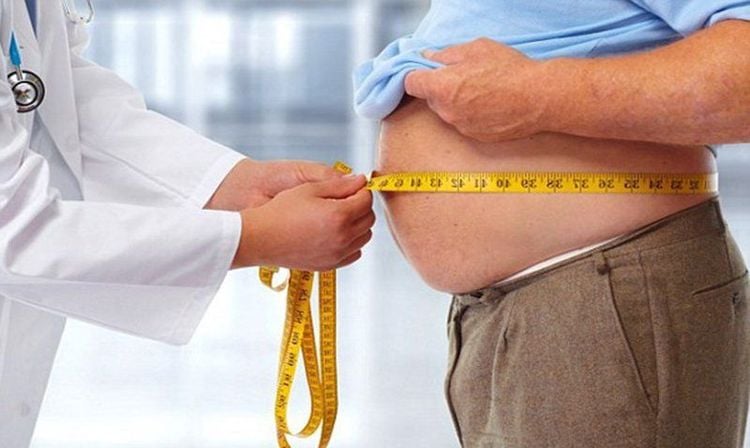
3. What symptoms does claudication cause?
Claudication can cause the following symptoms:
3.1 Claudication pain during movement
Depending on the location of the narrowing of the artery in your leg, your pain may be in your feet, calves, thighs, groin, or buttocks. Claudication can also occur in the hand, but is less common.3.2 Intermittent pain
These pain often come and go, intermittent, especially when you reduce the intensity of physical activity, it feels almost completely normal.3.3 Pain at rest
As the disease progresses, pain symptoms not only appear when moving, when walking, but even when lying or sitting still.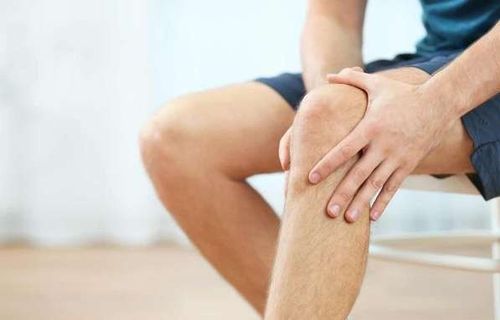
3.4 Skin color changes or ulcers
This happens when nutrient blood flow in the body is severely reduced, your fingers or toes may turn blue-violet and cold. In the long run, ulcers will appear.Other possible symptoms are:
Pain or burning sensation Weakness of the arms or legs
4. Intermittent pain when to see a doctor?
You need to see a doctor immediately if you feel pain in your arms or legs when you exercise. If left untreated, claudication and peripheral artery disease can reduce quality of life and even lead to life-threatening complications. Claudication can limit participation in social and recreational activities, interfere with daily work, and prevent people from playing sports.5. Testing and Diagnosis
Claudication is a symptom that is easily confused with other diseases, especially musculoskeletal diseases.For most people, especially the elderly, sometimes they think that their pain is inevitable due to old age and just restricting movement a little will relieve the pain. Therefore, unfortunately, claudication that is not properly diagnosed and treated in time can lead to dangerous complications, even life-threatening complications.
But fortunately, with the right diagnostic tests, your doctor can help you diagnose the exact cause and extent of the disease and help you return to everyday life soon.
In addition to physical examination of the pulses in the legs and arms, tests for claudication may be ordered such as:
Ankle-brachial index (ABI): This index helps doctors easily compare blood pressure in your ankle with blood pressure in your arm Vascular ultrasound: Allows your doctor to see and monitor blood flow in affected areas Magnetic resonance imaging or angiography Blood: This can show the exact location, extent, and number of narrowed blood vessels. In addition to the cause of atherosclerosis, the doctor may also order other tests to differentiate from other causes such as neurological, musculoskeletal, and joint based on pain, clinical examination results and history. medical history of each patient.
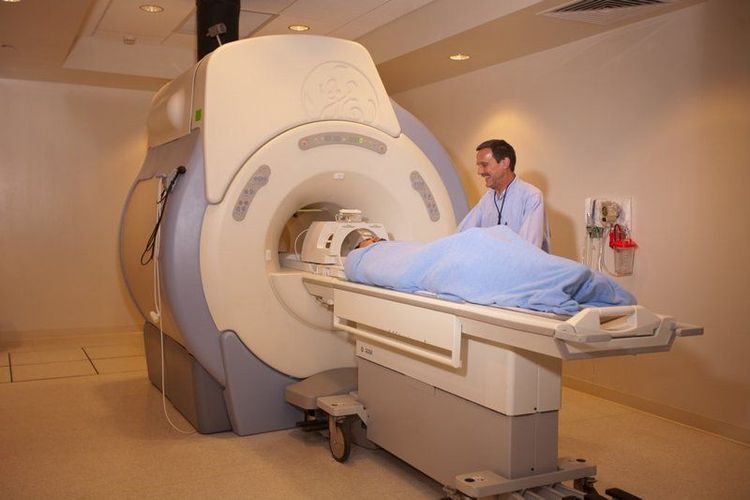
6. How to treat claudication?
Treatment of claudication and peripheral artery disease can help limit disease progression and reduce symptoms, with lifestyle changes being the most basic first step.If your claudication symptoms do not improve with lifestyle changes, your doctor will prescribe the following treatment options:
6.1 Taking medication
In addition to treating risk factors such as high blood pressure, diabetes, cholesterol, etc., your doctor may prescribe you medications that reduce the formation of blood clots and thin the blood, such as aspirin. , clopidogrel, cilostazol. These medications also increase the risk of bleeding, so patients should not self-medicate without consulting a doctor.6.2 Angioplasty and stenting
This method is indicated for severe arterial stenosis. The doctor intervenes by inserting a catheter into the blood vessel to the narrowing site, then inflates the balloon to reduce the degree of narrowing, and finally places metal supports (stents) in the narrow area to keep the blood vessel open. than.6.3 Performing vascular surgery
The surgeon will use healthy vessels taken from other parts of the body, direct blood from where there is normal flow, and then bridge the narrowing to supply blood to areas affected by anemia. blood.7. Lifestyle changes and effective home treatment
Atherosclerotic plaques that cause narrowing of the arteries are often caused by unhealthy lifestyle habits. Therefore, the solution for successful disease prevention and treatment is to change your lifestyle, immediately give up harmful habits and build yourself healthy and scientific habits.Even if the results are undetermined or you have been diagnosed with claudication and peripheral artery disease, remember to do the following:
7.1 Stay away from tobacco
Smoking is the single most important risk factor for the development and exacerbation of peripheral artery disease.7.2 Exercise
The fact is that exercising regularly every day makes it easier for your muscles to adapt to hypoxia and use oxygen more efficiently. After a period of practice, you will find that you can move more, walk farther with less pain. You consult with your doctor about which exercises are right for you and try to maintain regular exercise.7.3 Know and control blood cholesterol level
You should maintain a low-fat diet, enhanced with fruits, vegetables, whole grains, legumes. Applying exercise and a reasonable diet will help you control blood pressure and blood cholesterol, which are factors that cause atherosclerosis.
7.4 Avoid using certain medications
Drugs that cause vasoconstriction should not be used. Some over-the-counter cold and sinus medications contain substances that cause blood vessel constriction. Therefore, ask your doctor which medications you should avoid.7.5 Avoid foot injuries
Reduced blood flow to the tissues in the legs increases the likelihood that you will face complications from these injuries such as slow healing wounds, ulcers, long-term necrosis and amputation. You should choose soft socks, shoes or sandals when participating in activities that can easily injure you.7.6 Keep your feet below heart level
This will help increase blood flow to your legs. To ensure smooth blood flow to your legs even when you are sleeping, you can raise the head of the bed a little higher or lower the foot of the bed a little.Conclusion, claudication is a symptom of peripheral artery disease, a disease dangerous by reduced blood flow to the arm or leg. If left untreated, the disease can reduce quality of life and even lead to life-threatening complications. Therefore, when you see any suspicious symptoms in your body, take the initiative to visit a cardiology - vascular facility for advice and reasonable treatment.
To protect cardiovascular health in general and detect early signs of cardiovascular disease, customers can sign up for the Cardiovascular Screening Package of Vinmec International General Hospital. The examination package helps to detect cardiovascular problems at the earliest through tests and modern imaging methods. The package is for all ages, genders and is especially essential for people with risk factors for cardiovascular disease.
Why should you choose Cardiovascular Screening Package at Vinmec International General Hospital?
Simple and quick procedure. Enthusiastic advice and support, reasonable and convenient examination process. Comprehensive facilities, including a system of clinics and consultations, blood collection rooms, dining rooms, waiting areas for customers... Professional, caring way of working. Any questions that need to be answered by a specialist doctor as well as if you need to be examined and treated at Vinmec International General Hospital, you can contact Vinmec Health System nationwide or register online. online HERE.
Please dial HOTLINE for more information or register for an appointment HERE. Download MyVinmec app to make appointments faster and to manage your bookings easily.







